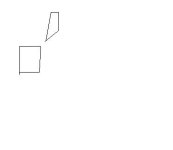Not much for diagrams....
You need to have a signal on the blade that its in the top position then you will enable the operator to jog and have a manual switch, then you can have that sub-routine run when in manual also have an auto position and run the auto sub when true
The best way I have found to write this type of program is to talk it out.... and make every 'state'ment one paragraph then you can move the paragraphs where needed
You know that in your first cycle the machine needs to be in home position, so the first would be check to see that all safeties are in place and the blade is in the upper pos
Next feed the material... {insert code} .... Stop feed
Cycle blade ( more code} .... verify blade
Rev material {more code}....
Cycle blade ( more code} .... verify blade is up
This is something like I would start with, that said Peter is the pro so anything he says read it...
Do you have some sample plc code of the structure you mentioned above? It doesn't have to be for cut to length.




